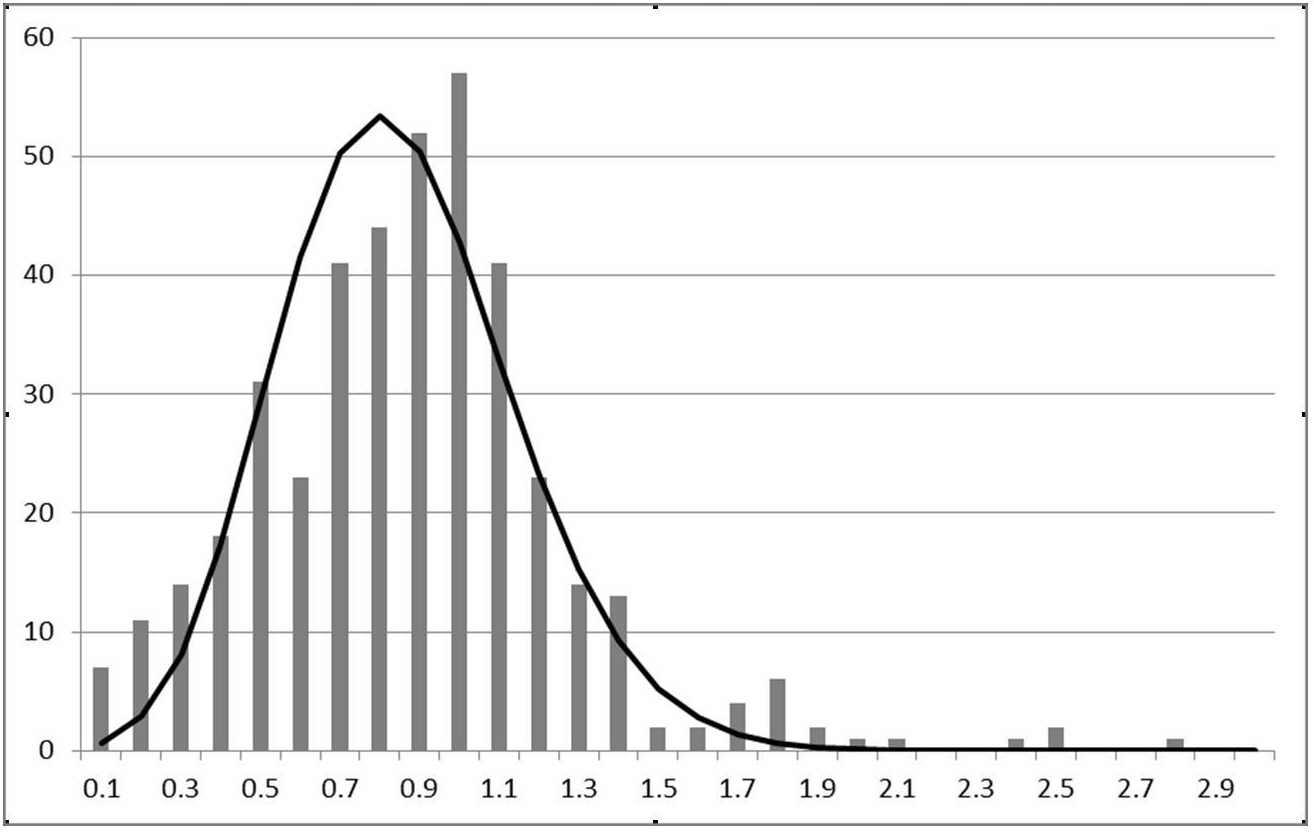Graph of the week: a short history of over-programming in defence acquisition
Posted By Andrew Davies and Mark Thomson on December 9, 2013 @ 14:00
As the new Defence Minister and his team contemplate the task in front of them [1], we thought it might be worth dipping into the ASPI archives for useful tips. Back in 2011 we published a paper Three views of risk: selecting and acquiring military equipment [2]. Tucked away as an appendix was a distillation of the experience of Stephen Gumley’s seven years as the CEO of the Defence Materiel Organisation.
Gumley’s Laws were four empirically based rules of thumb for steering defence projects. In this and following posts I’m going to expand on the thoughts in that article. They were hard-won lessons, and they should be helpful when thinking about the shape of the next defence white paper and its accompanying program of new equipment acquisitions.
I’m going to start with Gumley’s law of over-programming. Simply put, over-programming means that DMO’s approved capital investment program is constructed so the planned expenditure in each year exceeds the available acquisition budget. That might not sound very clever—after all, Mr Micawber [3] had some pretty stern words about exceeding one’s budget:
Annual income twenty pounds, annual expenditure nineteen [pounds] nineteen [shillings] and six [pence], result happiness. Annual income twenty pounds, annual expenditure twenty pounds ought and six, result misery.
Not so for the projects managed by DMO; history suggests that planning to expend £20 results in an actual expenditure of just £17. To see why, let’s look at the data (see figure below). It shows Mark Thomson’s analysis of the planned and actual annual budget performance of defence projects from 1990 to 2010. The horizontal axis is the proportion of expected funds actually spent in-year. So a project that spends exactly what was planned is graphed at 1.0. A project that overspends in a year has a score greater than 1.0, and those that underspend score less. Of the 411 project years’ worth of data, the average expenditure is about 85%. The reason for that is economically explained by Gumley:
Schedule delay is a non-symmetrical distribution (work can always be deferred to a later date but can never be advanced earlier than today).
 [4]
[4]
Sources: Defence Budget papers and annual reports.
For Mr Micawber, exceeding the budget is a source of misery. For bureaucrats, underspending the budget can also be a cause of misery—especially if someone else then snaffles the funds. But that’s not the only problem with underspending. Delivery of projects by DMO results in the ADF receiving new equipment and capabilities. If there was habitual underspending, the ADF would receive less materiel each year, resulting in less military capability available to government than planned. That’s why the DMO acquisition program is usually over-programmed by about 15%—the average project underperformance is offset by the extra money nominally available, and the ADF gets the full benefit of the acquisition budget. The arithmetic application of slippage follows an arcane recipe involving the iterative reallocation of planned spending into future years, beginning with the current year.
The major acquisition program run by DMO (formally called the Approved Major Capital Investment Program or AMCIP within Defence) is only part of the story, there’s also the Defence Capability Plan (DCP). The DCP lists unapproved projects pending government approval. It has the obvious formal tittle leading to the acronym UMCIP but everyone calls it the DCP.
Because the DCP anticipates the transfer of projects to the AMCIP following approval, it presumably includes a similar degree of overprograming in the planned phasing of past-approval expenditure. But the DCP also has to contend with schedule slippage prior to approval—i.e. slippage in the date of approval. From year to year, the rate of slippage in the DCP and AMCIP are adjusted in light of recent experience and the perceived risk of delays in the portfolio of projects under management. For example, one would anticipate less slippage in a program dominated by a couple of large off-the-shelf purchases, but higher slippage in a program full of developmental projects.
Under the previous government, over-programming of the DCP and AMCIP was accepted as a fact of life [5] until 2011:
There is also an element of over-programming built into the DCP. Over-programming is designed to provide flexibility and to ensure that best use is made of available funding in the development of individual projects. Over-programming means that project timing does change.
That wording isn’t quite right. A better formulation would be ‘over-programming is necessary because project timing changes’.
Nonetheless, in the second half of 2011 the government announced [6] that it’d be making efforts to tighten up the planning process and reducing over-programming:
Defence will implement improved planning to reduce over-programming in the DCP by better aligning capacity with resources and strengthening management focus.
In principle, if the management of projects could be tightened to the point where schedule delays became true rarities, then over-programming wouldn’t be necessary. In practice, that’s not going to happen as long as projects contain elements of risk. Recent experience has shown that buying genuinely off-the-shelf is the only way to be confident about delivery dates. Whenever R&D is involved in a project, delays are almost inevitable; Gumley’s observation about the non-symmetrical nature of yesterday and tomorrow will ensure that. Over-programming will need to be a feature of future investment plans—the only question is how much.
Andrew Davies is senior analyst for defence capability at ASPI and executive editor of The Strategist. Mark Thomson is senior analyst for defence economics at ASPI.
Article printed from The Strategist: https://aspistrategist.ru
URL to article: /graph-of-the-week-a-short-history-of-over-programming-in-defence-acquisition/
URLs in this post:
[1] contemplate the task in front of them: https://aspistrategist.ru/a-hard-road-ahead-for-defence/
[2] Three views of risk: selecting and acquiring military equipment: https://www.aspistrategist.ru/publications/special-report-issue-42-three-views-of-risk-selecting-and-acquiring-military-equipment
[3] Mr Micawber: http://www.telegraph.co.uk/finance/personalfinance/9066005/What-Charles-Dickens-said-about-money-12-memorable-quotes.html
[4] Image: https://aspistrategist.ru/wp-content/uploads/2013/12/graph_overprogramming.jpg
[5] accepted as a fact of life: http://www.defence.gov.au/minister/105tpl.cfm?CurrentId=12045
[6] the government announced: http://www.minister.defence.gov.au/2011/08/18/minister-for-defence-materiel-jason-clare-and-minister-for-defence-stephen-smith-release-of-the-2011-on-line-public-defence-capability-plan/
Click here to print.